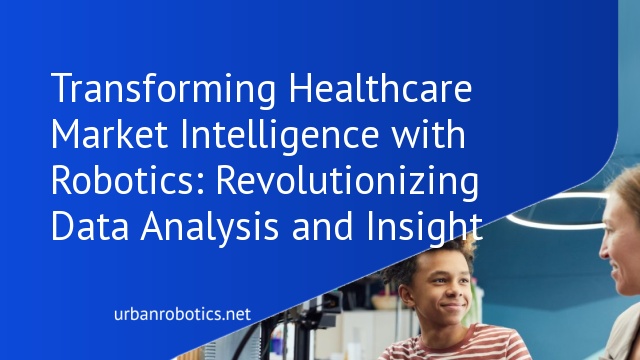Understanding Healthcare Market Intelligence
Healthcare market intelligence focuses on gathering, analyzing, and interpreting data related to healthcare market dynamics. Through various sources like electronic health records (EHRs), patient surveys, and financial data, we can gain deep insights into market trends, patient behavior, and operational efficiencies.
Key Components:
- Data Collection: Systems gather data from multiple sources such as EHRs, surveys, and market reports.
- Data Analysis: Algorithms analyze the collected data to identify patterns and insights.
- Interpretation: Insights derived from data analysis inform decision-making and strategy formulation.
- Informed Decision-Making: Enables data-driven decisions in planning and operations.
- Market Trend Prediction: Anticipates future trends, aiding in strategic planning.
- Resource Optimization: Allocates resources effectively to enhance patient care and reduce costs.
Effective market intelligence helps stakeholders stay competitive by providing actionable insights that drive healthcare improvements. By integrating robotics, we can elevate these processes further, ensuring precision and efficiency in healthcare market intelligence.
The Role of Robotics in Healthcare Market Intelligence
Robotics play a critical role in healthcare market intelligence by enhancing data gathering, analysis, and interpretation.
Key Technologies Driving Robotics in Healthcare
Advanced technologies drive robotics in healthcare. Machine learning algorithms analyze large datasets quickly, revealing patterns and trends. Natural language processing (NLP) assists in understanding unstructured data from sources like patient records and social media. Imaging technologies, including computer vision, enhance diagnostics and data visualization. Robotic process automation (RPA) speeds up routine tasks, streamlining data collection. Collectively, these technologies improve the accuracy and efficiency of healthcare market intelligence.
Benefits of Robotics in Market Analysis
Robotics bring significant benefits to market analysis. Enhanced accuracy ensures reliable data insights, reducing human error. Speedy data processing enables real-time analytics, allowing timely decision-making. Automation of repetitive tasks frees up resources, letting healthcare professionals focus on strategic initiatives. Improved data visualization aids in better understanding complex trends and patterns. Overall, robotics facilitate informed decisions, optimize resource allocation, and enhance patient care outcomes.
Applications of Robotics in Healthcare Market Intelligence
Robotics in healthcare market intelligence provide several advantages, from data collection to competitive analysis. Let’s explore these applications in detail.
Patient Data Collection and Analysis
Robotics streamline patient data collection and analysis by automating the extraction of patient records. Using natural language processing, robotics convert unstructured data into structured formats, enhancing accuracy. These systems analyze vast datasets to generate actionable insights on patient demographics, treatment outcomes, and healthcare trends. As a result, healthcare providers make data-driven decisions that improve patient care.
Predictive Analytics and Forecasting
Robotics enhance predictive analytics and forecasting by leveraging machine learning algorithms to identify patterns in historical data. By analyzing patient data, market trends, and treatment outcomes, robotics predict future healthcare needs and market shifts. These predictions enable healthcare organizations to prepare for emerging trends and allocate resources efficiently, mitigating potential risks.
Competitive Analysis and Market Trends
Robotics facilitate competitive analysis and market trends identification by continuously monitoring industry data. These systems collect data on competitors’ strategies, product launches, and market performance. Robotics employ advanced analytics to highlight market trends, benchmark performance, and provide strategic insights, aiding businesses in staying competitive and responsive to market changes.
Challenges and Considerations
Integrating robotics in healthcare market intelligence offers significant benefits, but also poses several challenges that need addressing. Key considerations include data privacy and security, and integration with existing systems.
Data Privacy and Security
Ensuring data privacy and security remains a critical concern when incorporating robotics in healthcare market intelligence. Robotics handle vast amounts of sensitive patient data, necessitating robust encryption methods to protect this information against breaches. Compliance with regulations like the Health Insurance Portability and Accountability Act (HIPAA) is mandatory, and any failure can result in severe penalties. Implementing stringent authentication protocols and regular security audits can further safeguard patient information from unauthorized access.
Integration with Existing Systems
Seamless integration with existing systems is essential for the effective use of robotics in healthcare market intelligence. Healthcare providers often face compatibility issues due to disparate legacy systems. Ensuring interoperability between robotic systems and existing software aids in smooth data flow and consistency. Employing standardized protocols and APIs facilitates easier integration and reduces disruptions. Training staff to adapt to new technologies minimizes resistance and promotes efficient utilization of robotic tools in daily operations.
Future Trends and Innovations
The future of healthcare market intelligence with robotics shows promise with several distinct trends. We expect innovations to further transform how data is collected and analyzed.
AI and Machine Learning Integration
AI and machine learning are becoming integral to robotics in healthcare market intelligence. These technologies enhance predictive analytics by identifying patterns in vast datasets, enabling proactive decision-making. For example, machine learning algorithms analyze patient data to forecast disease outbreaks. By continuously learning from new data, AI systems refine their accuracy over time, providing more reliable insights and recommendations for healthcare providers.
Advanced Robotics in Market Research
Advanced robotics in market research revolutionizes data collection and analysis methods. Robots equipped with natural language processing can conduct surveys and interviews, processing responses in real-time. This technology allows for nuanced understanding and segmentation of consumer behaviors. Additionally, robotics streamline repetitive tasks such as data entry, ensuring high accuracy and efficiency. These advancements enable healthcare organizations to stay competitive by rapidly adapting to market changes.
Conclusion
Embracing robotics in healthcare market intelligence is transforming how we collect and analyze data. These technologies are not only enhancing efficiency but also providing deeper insights into patient care and market trends. As we navigate challenges like data privacy and system integration, the future looks promising with AI and machine learning leading the way. By leveraging advanced robotics, we can stay ahead of market shifts and make more informed decisions, ultimately improving healthcare outcomes and operational efficiency.





